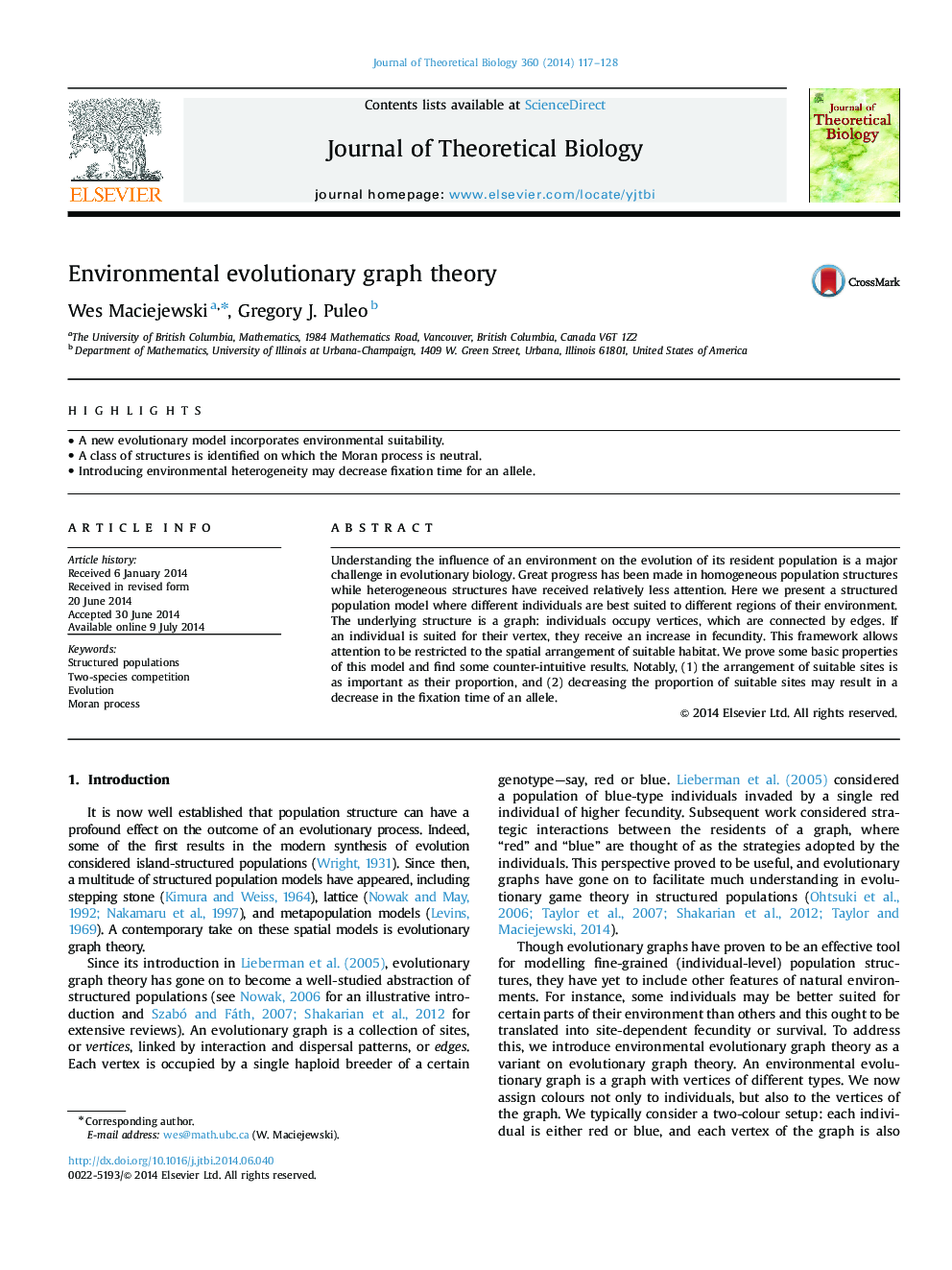| Article ID | Journal | Published Year | Pages | File Type |
|---|---|---|---|---|
| 4496108 | Journal of Theoretical Biology | 2014 | 12 Pages |
•A new evolutionary model incorporates environmental suitability.•A class of structures is identified on which the Moran process is neutral.•Introducing environmental heterogeneity may decrease fixation time for an allele.
Understanding the influence of an environment on the evolution of its resident population is a major challenge in evolutionary biology. Great progress has been made in homogeneous population structures while heterogeneous structures have received relatively less attention. Here we present a structured population model where different individuals are best suited to different regions of their environment. The underlying structure is a graph: individuals occupy vertices, which are connected by edges. If an individual is suited for their vertex, they receive an increase in fecundity. This framework allows attention to be restricted to the spatial arrangement of suitable habitat. We prove some basic properties of this model and find some counter-intuitive results. Notably, (1) the arrangement of suitable sites is as important as their proportion, and (2) decreasing the proportion of suitable sites may result in a decrease in the fixation time of an allele.
